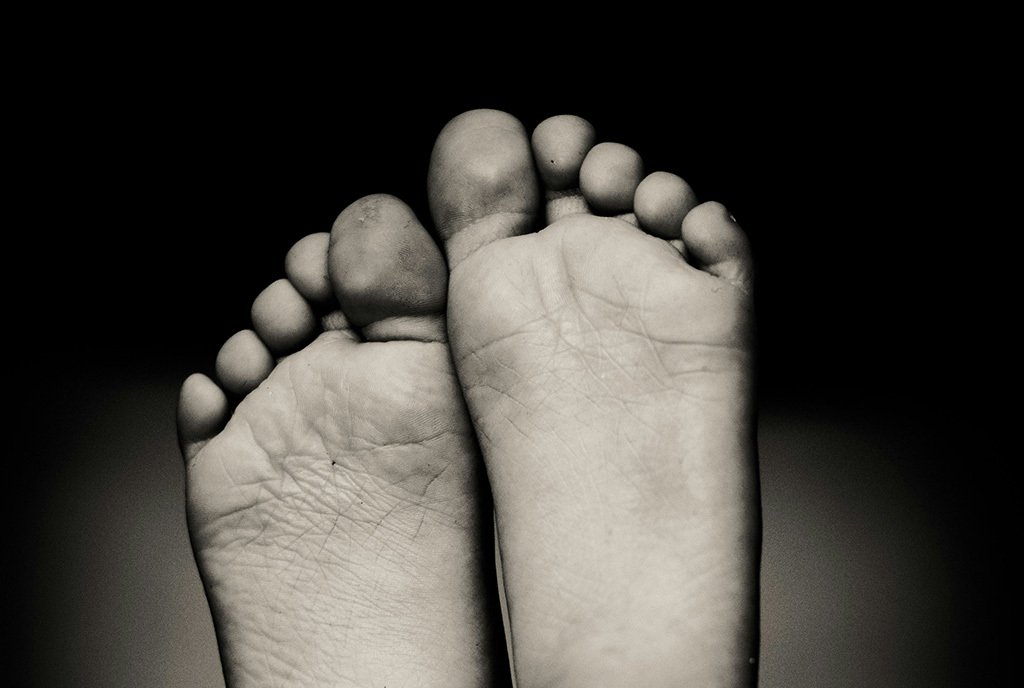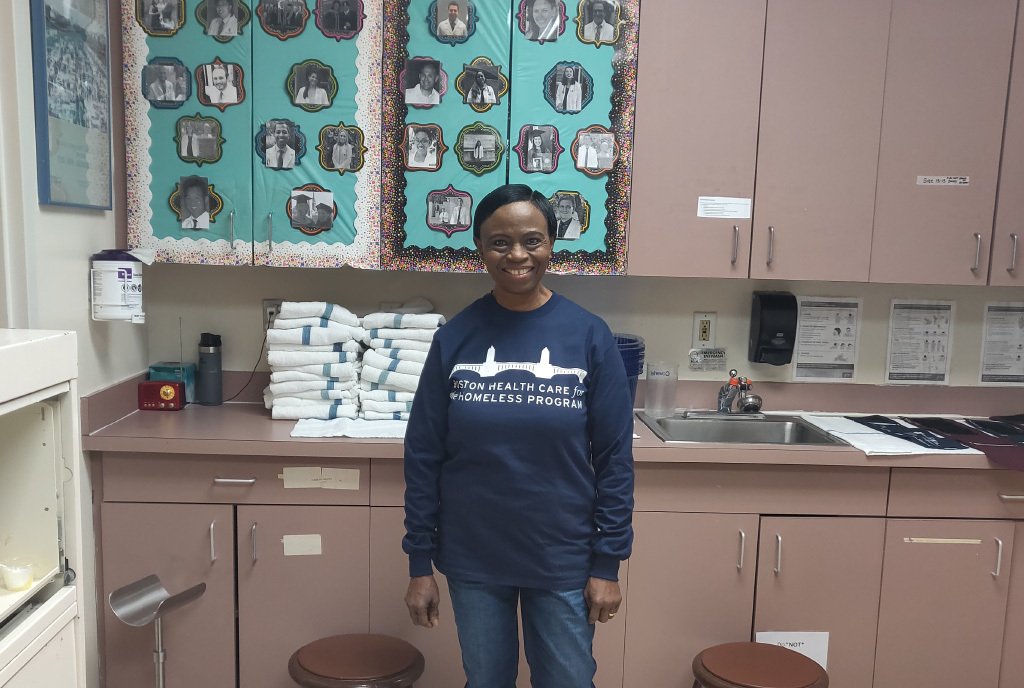
Greater than 20 years in the past, a person confirmed up for remedy at St. Francis Home, a homeless shelter in Boston, MA.
Cecilia Ibeabuchi, the newly appointed nurse supervisor for the power, got here to see him. The person was complaining of a pounding headache and was asking for Tylenol. As she attended to him, Ibeabuchi seen the person’s ft, swaddled in 4 pairs of socks—and coming from them was a nauseating odor.
The foot clinic has [served] hundreds of individuals experiencing homelessness within the Boston area…incomes Ibeabuchi the affectionate nickname, “The Foot Girl.”
Ibeabuchi persuaded the person to let her take away his socks, peeling them off pair by pair, the odor rising, till she reached the final pair—which wouldn’t come off. Realizing the indicators of extreme an infection, Ibeabuchi had the person despatched to the hospital, the place the sock was eliminated and a few of his toes amputated.
“However the different ones have been saved attributable to this motion,” Ibeabuchi notes proudly.
Ibeabuchi returned to her supervisor at Boston Well being Take care of the Homeless, the nonprofit service supplier for which Ibeabuchi has labored for over 20 years, and pitched a brand new concept: a foot clinic run out of the shelter.
The foot clinic has been in operation since then, serving hundreds of individuals experiencing homelessness within the Boston area, and incomes Ibeabuchi the affectionate nickname, “The Foot Girl.”
The Foot Girl
Born in Nigeria, Ibeabuchi emigrated to america within the mid-Nineteen Eighties to pursue what would develop into a number of levels. She holds a BA in biology from Emmanuel Faculty, one other BA in nursing from Simmons Faculty, and a grasp’s diploma in nursing from Suffolk College.
Ibeabuchi got here to Boston Well being Take care of the Homeless Program (BHCHP) within the mid-Nineties and was then employed as director of nursing for the group.
“I stored questioning, why have been individuals homeless in America?”
BHCHP is a novel establishment serving the larger Boston space. The group’s mission is “to make sure unconditionally equitable and dignified entry to the best high quality well being take care of all people and households experiencing homelessness in our neighborhood.” To that finish, BHCHP at this time employs a whole lot of healthcare professionals who work in shelters, on the streets, in clinics, and in partnership with native authorities.
In an interview with NPQ, Ibeabuchi says she was interested in BHCHP due to the issue it seeks to handle—homelessness on this planet’s richest nation—and since she felt drawn on a private stage to these experiencing homelessness.
“I stored questioning, why have been individuals homeless in America?” Ibeabuchi recollects. On the identical time, she notes, “Being abroad with no mother and father, no grandparents, no family [here], I recognized very properly with the people.”

Caring for Toes
For many individuals experiencing homelessness, ft are sometimes a really literal location of maximum discomfort and doubtlessly critical well being dangers. However, in Ibeabuchi’s expert palms, they’ll additionally characterize a gateway to a broader understanding of the consumer’s well being and wishes, offering a bridge to construct vital belief.
Toes can embody, amongst different issues, independence. Many who’re homeless, Ibeabuchi factors out, rely totally on their ft for transportation. “When the ft are compromised in any means, it makes transferring from one place to the opposite extraordinarily tough,” she says.
Join our free newsletters
Subscribe to NPQ’s newsletters to have our high tales delivered on to your inbox.
By signing up, you conform to our privateness coverage and phrases of use, and to obtain messages from NPQ and our companions.
A number of afflictions goal the ft, from blisters to circumstances associated to the chilly—particularly in New England—like frostbite or the doubtless lethal trench foot.
On the identical time, the ft will be an entrée, particularly amongst sufferers reluctant to hunt or obtain medical assist for different maladies, to a broader image of the affected person’s total well being.
Toes is usually a direct window into well being—discolored toenails will be suggestive of cardiac and/or circulatory issues, for instance, Ibeabuchi notes.
“Sustaining their dignity and respect is absolutely essential to me.”However simply as considerably, Ibeabuchi has discovered that tending to individuals’s ft gives a chance to construct relationships and the belief typically essential to nudge reluctant sufferers into opening themselves to extra complete care.
“You don’t simply think about their ft, you have a look at them from head to toe, full physique, then assess, ask questions, discover out extra particulars about them,” Ibeabuchi says. “Bear in mind, our homeless people is not going to let you know, is not going to give out data simply. You need to achieve their belief, construct a trusting relationship with them earlier than stepping into sharing their life tales with you, after which opening up themselves to be cared for.”
Classes in Foot Care
Offering hundreds of foot care appointments yearly requires steady labor. To that finish, Ibeabuchi has for years recruited nursing college students from native faculties and universities to work within the foot clinic.
The job is demanding, and Ibeabuchi is demanding of those that work below her supervision as properly. She has little time for squeamishness and emphasizes that student-workers should prioritize respecting the dignity of these they work with.
“Sustaining their dignity and respect is absolutely essential to me—most essential,” says Ibeabuchi, who asks college students to “consider it as your self. In case you are positioned on this scenario, how would you need different individuals to method you or speak to you about your ft smelling?”
When purchasers can come and get their ft not simply examined however attended to—cleaned, handled with acceptable medication, supplied with contemporary socks—a door is opened, says Ibeabuchi, to larger therapeutic.
For purchasers, Ibeabuchi says, the foot care “lets you begin to open. You’ll know that this particular person is absolutely investing in you, in your life and that your life is essential to them.”
Phrase of the foot clinic has gotten out. Teams devoted to caring for homeless people have contacted Ibeabuchi and visited to see firsthand the work the foot clinic is doing.
In the meantime, Ibeabuchi’s scholar recruitment has created, over time, a protracted record of alumnae, a few of whom have taken their expertise again to their skilled lives.
“Some have gone again into their universities and launched foot care,” to their colleagues, says Ibeabuchi, proudly displaying me {a photograph} of 1 former scholar and her partner washing one another’s ft at their marriage ceremony.
The Complete Human Being
It’s unattainable in contemplating the work of the foot clinic to not replicate on examples of foot washing as a devotion of care practiced by many world religions. Within the New Testomony, Jesus is depicted washing the ft of his disciples. Muslims apply foot washing in preparation for prayer. Hinduism, Sikhism and Native American religions additionally apply ritual foot washing. For Ibeabuchi, who’s herself Christian, such teachings resonate deeply with the secular medical foot care she and her colleagues present.
“Toes are one of many [most important] components of the human physique,” Ibeabuchi notes. “One factor I can let you know this has executed for me personally and professionally, is to have the ability to perceive the entire human being, to permit my affected person to inform me extra of their tales, to permit them to, for me to interact them into main care somewhat than going into the emergency rooms for one thing that we may forestall.”